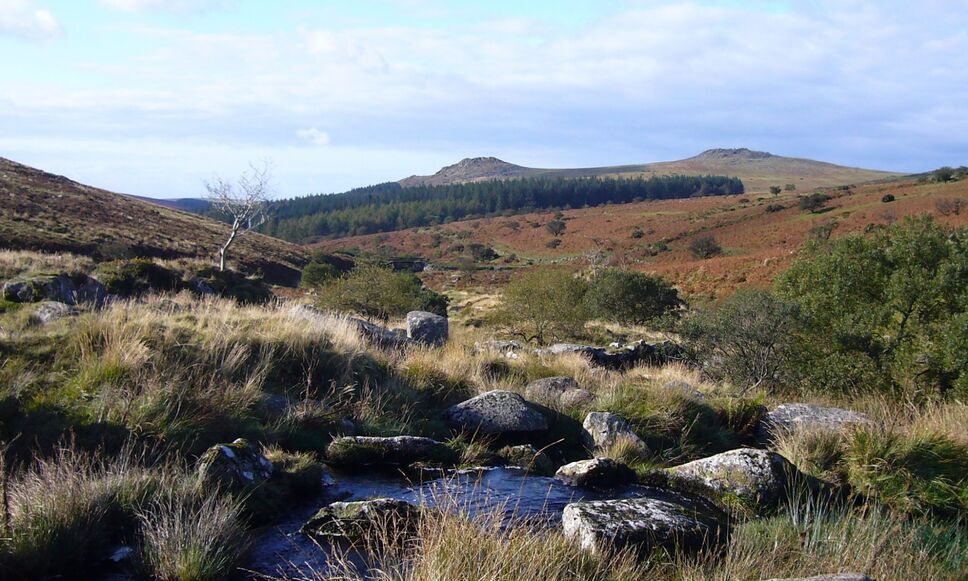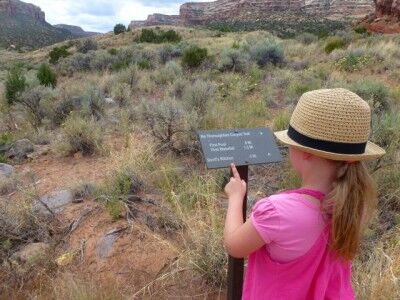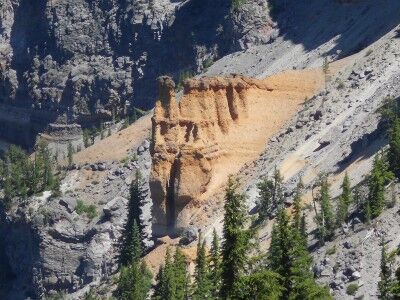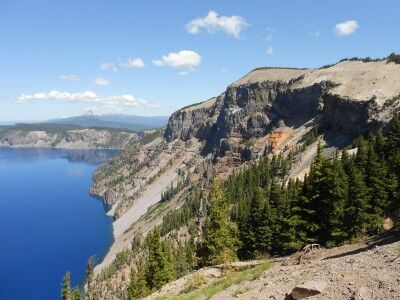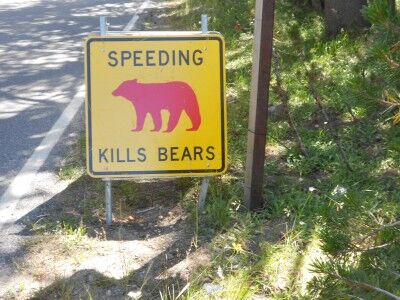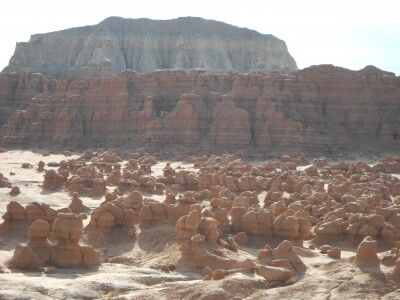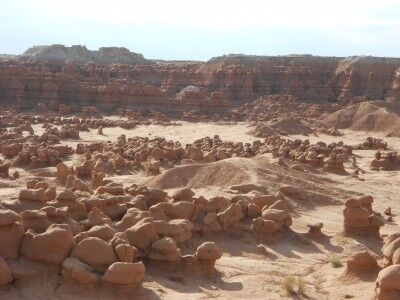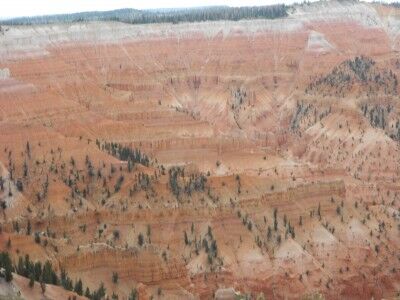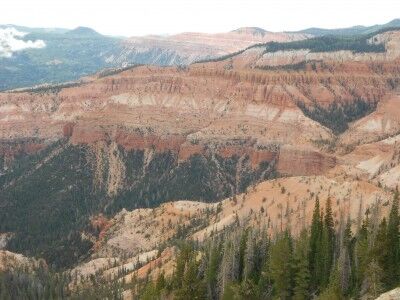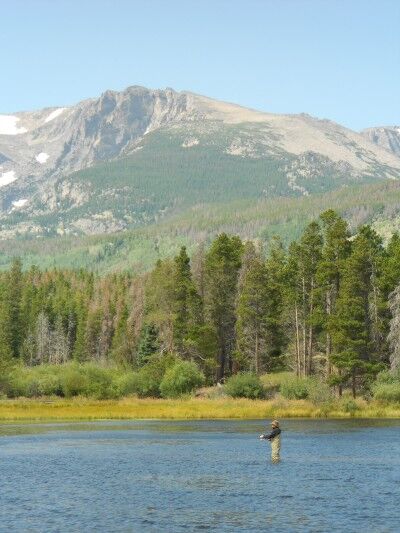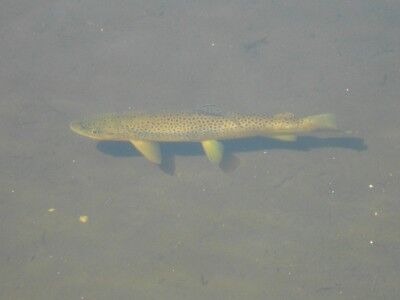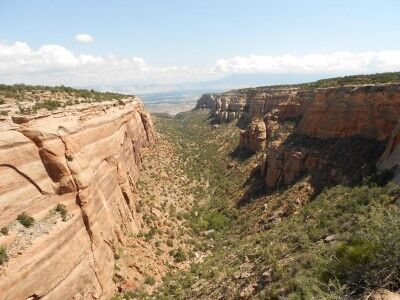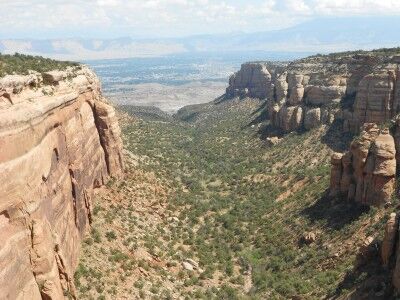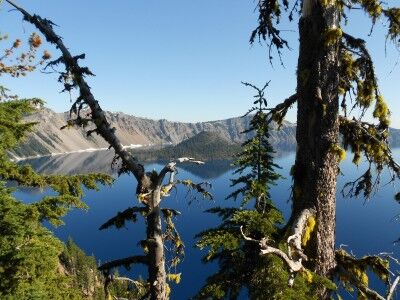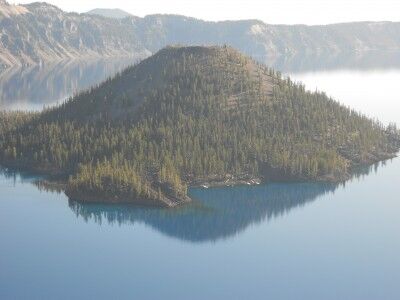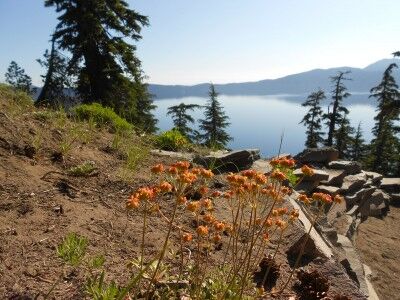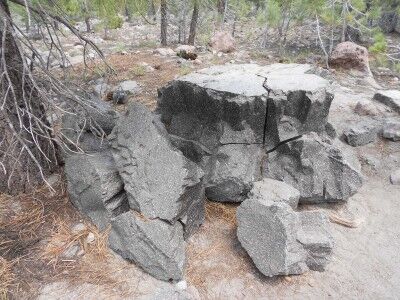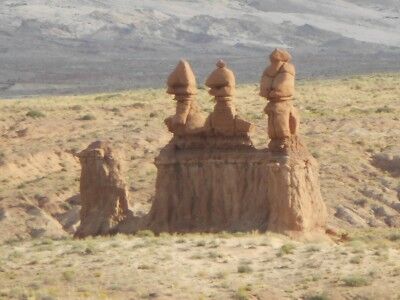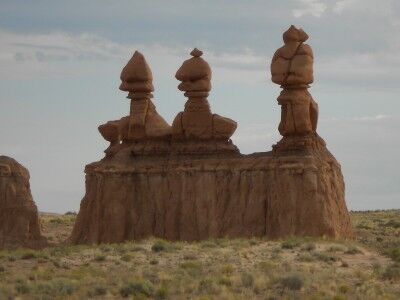By Kristen Lummis (enjoy her blog Brave Ski Mom, like her on facebook or follow her on twitter @BraveSkiMom)
My city-girl niece visited us this summer. She lives in the Denver area and we live on Colorado’s Western Slope. She is 8 years old, full of energy and loves to be outdoors. I am much older, but still full of energy. And, I too, love to be outdoors. We are a good match.
So on a cool Saturday, despite the threat of rain, my mom and I took her hiking at Colorado National Monument. Here is our report from the Devil’s Kitchen Trail.
Lots of Prickly Pear Blossoms: I am mom to two boys. Thus, I am used to spotting lizards, oohing and ahhing over rocks, and identifying unique shapes and uses for twigs and sticks. My niece pointed out the brilliant cactus blossoms and spotted lizards. Rocks and sticks, not so much.
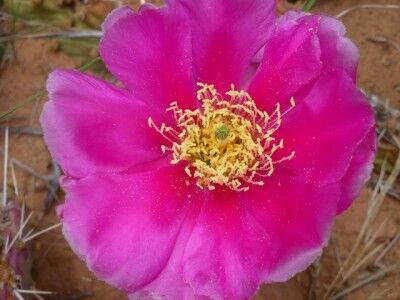
Plenty of Room to Run: And run she did. She ran, she climbed, she skipped and she balanced. An open trail, a beautiful day and nothing to do but enjoy being amidst the splendor of nature.
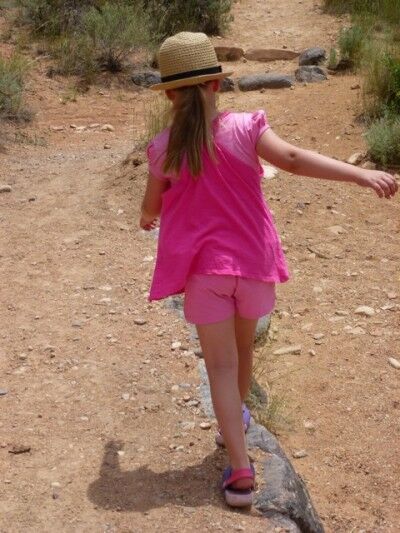
Time to Practice Trail Boss Skills: My niece is the youngest in her family. We let her choose the trail, set the pace, lead the way, and read the signs. We helped her find the cairns marking the trail and she became our official cairn-spotter. She was an excellent trail boss.
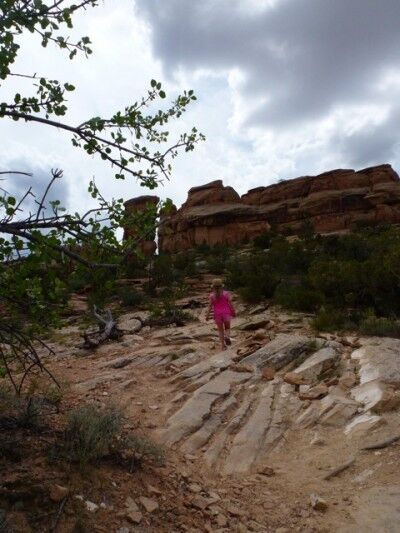
While hiking with her, I was reminded of an article I recently read entitled Leave No Child Inside. Concerned about the trend of more and more kids spending their days indoors looking at TV and computer screens, a group of outdoor agencies and advocates in Chicago are urging families to turn off the technology and get outside. As one of the organizers put, “(Children) are excited to be outdoors.”
That is so true. No matter where you live, kids are excited to be outdoors. Some time in the sunshine, lying in the grass, hiking on a trail or chasing butterflies is exactly what our kids need.
No matter where you live, you can find the great outdoors. It’s just a matter of opening the door and walking outside: to an urban park, to a meadow, to a national monument, to wherever you can find nature.
When You Go: 2011 is a great year to get out and visit Colorado National Monument. Located near Grand Junction, approximately 250 miles west of Denver on I-70, the Monument is celebrating its 100th Anniversary as a unit of the National Park System with fireworks, special events and new displays in the Visitors’ Center.
Hiking: Comprised of 32 square miles of stunning red rock canyons and monoliths between Grand Junction and Fruita, Colorado National Monument has miles and miles of established and back country trails.
My niece, my mom and I chose the Devil’s Kitchen trail for our adventure. 1 and 1/2 miles long, the trail begins on sandy, clearly marked trail and after about 1/2-mile transitions to sandstone and slickrock.
Climbing and switch-backing across slickrock, the trail offers enough adventure to keep kids engaged and ends in the Devil’s Kitchen, a sandstone “room” hundreds of feet above the valley. With rocks to climb on and ledges to peer over, kids can keep themselves busy in the Kitchen for hours.
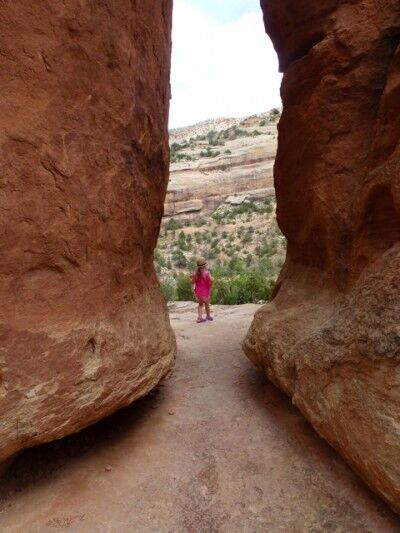
Camping: Camping is available at the Saddlehorn Campground, along the upper rim of the canyons in the pinyon and juniper forest. There are no hookups for RVs, but there are flush toilets and running water, which in my mind, changes the experience from camping to glamping. Sites are available on a first-come, first-served basis.
Finally, if you’ve ever wondered why some National Park sites are called Parks and some are called Monuments, here’s your answer: Parks require the approval of Congress. Monuments do not.
In 1911, with feelings in Congress running against conservation, Colorado officials didn’t think they had the votes necessary to create a national park. In May of that year, President Taft preserved this glorious slice of canyon country with the stroke of his pen.
Enjoy!
